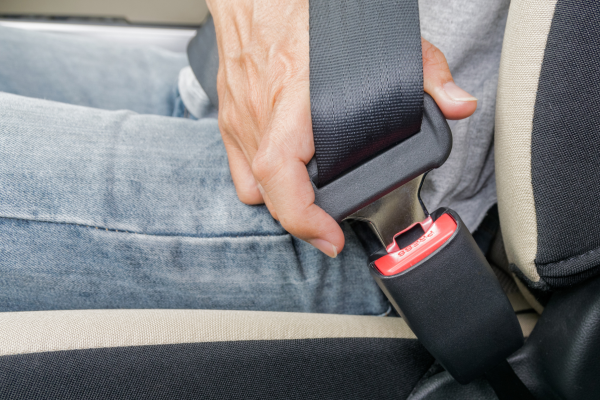Vehicle Safety
How to Deal with a Seat Belt Latch That Won't Release

How to Deal with a Seat Belt Latch That Won't Release
A malfunctioning seat belt latch can be a frustrating and potentially dangerous issue. Whether you're an everyday driver or a car enthusiast, knowing how to troubleshoot and correct this problem is essential. This guide will provide you with practical steps and tips to address a seat belt latch that won't release.
Common Causes of a Stuck Seat Belt Latch
Understanding the reasons behind a stuck seat belt latch can help you devise the best solution. Here are some common causes:
Debris or dirt: Over time, dust, crumbs, or other small particles can accumulate inside the latch mechanism, causing it to get stuck.
Mechanical failure: Internal components of the latch can wear out or break, preventing the latch from releasing.
Temperature extremes: Extremely hot or cold weather can affect the latch mechanism's functionality.
Step-by-Step Guide to Fixing a Seat Belt Latch That Won't Release
Here's a detailed process for addressing the issue:
1. Inspect for Visible Obstructions
First, examine the latch and seat belt for any obvious obstructions. Look for dirt, small objects, or debris around the latch area. If you find anything, use a small brush or compressed air to clean it out.
2. Apply Lubrication
If there are no visible obstructions, try applying a small amount of lubricant to the latch mechanism. Choose a lubricant that is safe for metal and plastic parts. Spray or apply a few drops of lubricant into the latch slot and press the release button several times to distribute it evenly.
3. Check for Physical Damage
Inspect the seat belt latch for any signs of physical damage. If the latch or release button is cracked, bent, or broken, you may need to replace the entire latch assembly.
4. Use a Slim Tool
If the latch is still stuck, you can try to use a slim tool, such as a flathead screwdriver or a butter knife, to gently pry the latch open. Insert the tool into the latch slot and apply gentle pressure while pressing the release button.
5. Seek Professional Help
If all else fails, it's time to seek professional assistance. Visit a certified mechanic or your car manufacturer's service center to have the seat belt latch inspected and repaired by experts.
Preventative Measures
To avoid future issues with your seat belt latch, consider the following preventative measures:
Regular cleaning: Periodically clean the seat belt and latch mechanism to remove dust and debris.
Weather protection: Try to protect your car's interior from extreme temperatures by using sun shades or parking in shaded areas.
Routine inspections: Regularly inspect the seat belts and latches for signs of wear and tear, and address any issues promptly.
Dealing with a seat belt latch that won't release can be a straightforward process if you follow the correct steps. By understanding the common causes and applying the appropriate solutions, you can ensure that your seat belt functions properly and keeps you safe. Remember to conduct regular maintenance and seek professional help when necessary to keep your vehicle in top condition.
How to Deal with a Seat Belt Latch That Won't Release
A malfunctioning seat belt latch can be a frustrating and potentially dangerous issue. Whether you're an everyday driver or a car enthusiast, knowing how to troubleshoot and correct this problem is essential. This guide will provide you with practical steps and tips to address a seat belt latch that won't release.
Common Causes of a Stuck Seat Belt Latch
Understanding the reasons behind a stuck seat belt latch can help you devise the best solution. Here are some common causes:
Debris or dirt: Over time, dust, crumbs, or other small particles can accumulate inside the latch mechanism, causing it to get stuck.
Mechanical failure: Internal components of the latch can wear out or break, preventing the latch from releasing.
Temperature extremes: Extremely hot or cold weather can affect the latch mechanism's functionality.
Step-by-Step Guide to Fixing a Seat Belt Latch That Won't Release
Here's a detailed process for addressing the issue:
1. Inspect for Visible Obstructions
First, examine the latch and seat belt for any obvious obstructions. Look for dirt, small objects, or debris around the latch area. If you find anything, use a small brush or compressed air to clean it out.
2. Apply Lubrication
If there are no visible obstructions, try applying a small amount of lubricant to the latch mechanism. Choose a lubricant that is safe for metal and plastic parts. Spray or apply a few drops of lubricant into the latch slot and press the release button several times to distribute it evenly.
3. Check for Physical Damage
Inspect the seat belt latch for any signs of physical damage. If the latch or release button is cracked, bent, or broken, you may need to replace the entire latch assembly.
4. Use a Slim Tool
If the latch is still stuck, you can try to use a slim tool, such as a flathead screwdriver or a butter knife, to gently pry the latch open. Insert the tool into the latch slot and apply gentle pressure while pressing the release button.
5. Seek Professional Help
If all else fails, it's time to seek professional assistance. Visit a certified mechanic or your car manufacturer's service center to have the seat belt latch inspected and repaired by experts.
Preventative Measures
To avoid future issues with your seat belt latch, consider the following preventative measures:
Regular cleaning: Periodically clean the seat belt and latch mechanism to remove dust and debris.
Weather protection: Try to protect your car's interior from extreme temperatures by using sun shades or parking in shaded areas.
Routine inspections: Regularly inspect the seat belts and latches for signs of wear and tear, and address any issues promptly.
Dealing with a seat belt latch that won't release can be a straightforward process if you follow the correct steps. By understanding the common causes and applying the appropriate solutions, you can ensure that your seat belt functions properly and keeps you safe. Remember to conduct regular maintenance and seek professional help when necessary to keep your vehicle in top condition.


